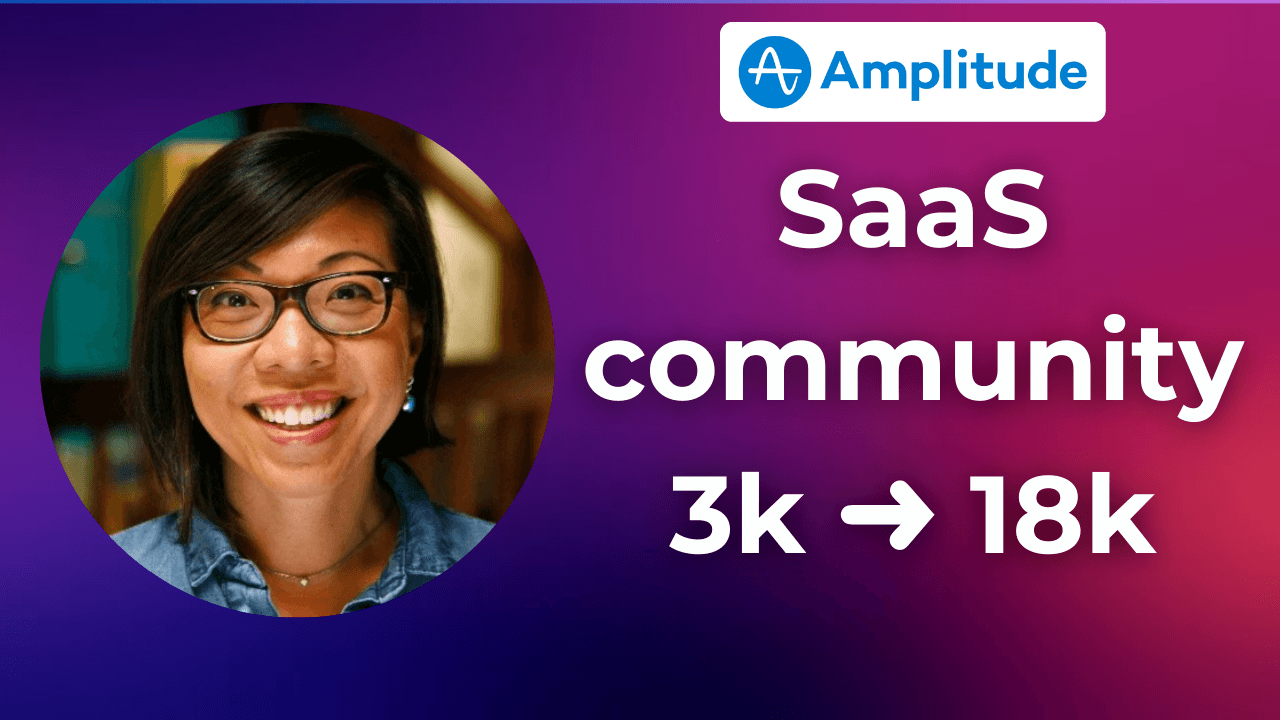
Building a Thriving Community Around Your SaaS Product

par
Aleksa Mitrović
19 sept. 2024
Identifiez et convertissez vos utilisateurs les plus importants
Créer un compte
Imagine growing your community from 3,000 to over 18,000 members in just 18 months. That’s exactly what Amplitude achieved under the guidance of Esther Trapadoux, their Head of Community. This exponential growth wasn’t just about adding numbers; it was about creating a thriving ecosystem where users engage, learn, and share.
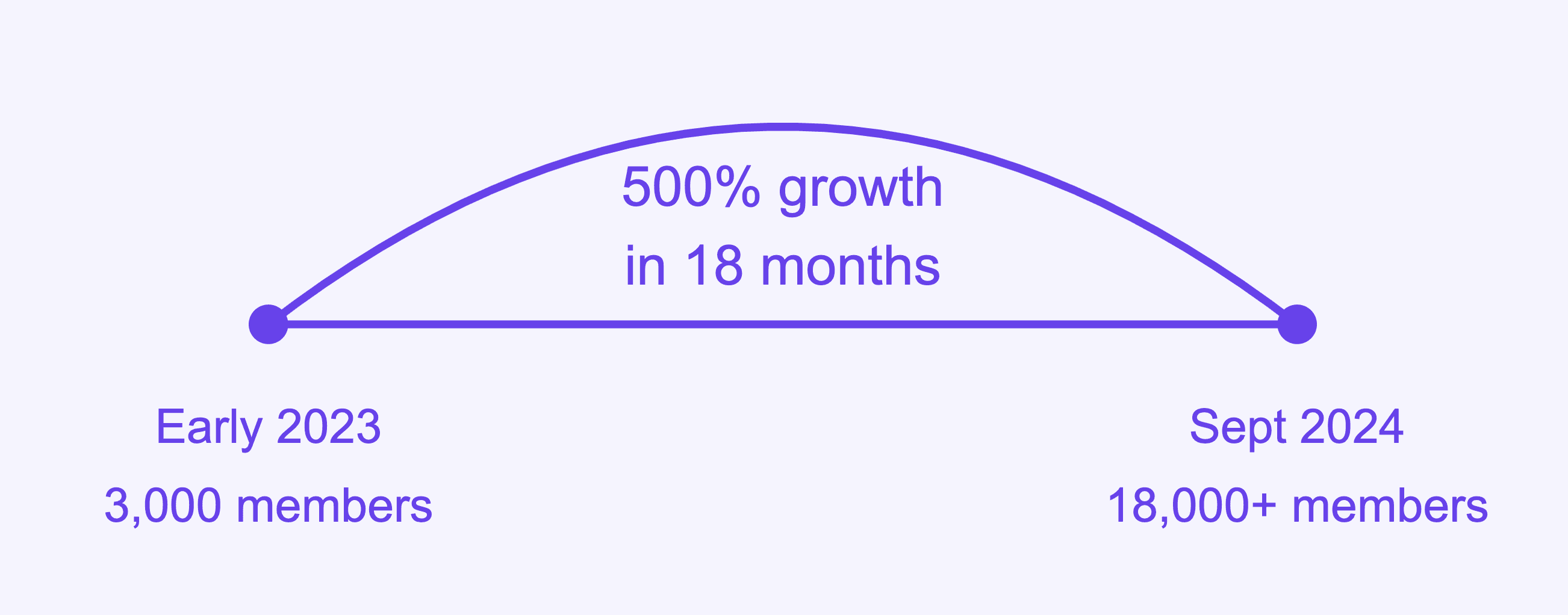
Building a strong community around your product can be a game-changer. I recently had the opportunity to speak with Esther, Head of Community at Amplitude, about her experiences and insights in managing a community for a product analytics platform.
Here are some key takeaways from our conversation that can help you build and nurture a successful community around your SaaS product.
Understanding Your Product and Users
Before diving into community building, it's crucial to assess whether your product and user base are suitable for a community. Esther emphasizes that not every SaaS product needs a community. Consider these factors:
Problem Complexity: Is the problem your product solves complex enough to warrant ongoing discussions and knowledge sharing?
Use Case Variety: Do your users leverage your product for a wide range of use cases?
User Passion: Do you have a group of passionate users who love your product and are eager to explore its capabilities?
Product Complexity: Is your product robust enough to generate continuous learning and discussion opportunities?
Amplitude found success in community building because their product analytics platform meets these criteria. Users are constantly exploring new ways to analyze data, solve complex problems, and push the boundaries of what's possible with the tool.
Types of Communities: Support vs. Practice

Esther distinguishes between two primary types of communities for SaaS products:
Support Communities: These focus on helping users with immediate problems, troubleshooting, and basic product usage. They're great for content creation and reducing the load on human support resources
Communities of Practice: These go beyond basic support to foster deeper discussions, knowledge sharing, and exploration of advanced use cases. They're ideal for products with complex problem spaces and passionate user bases
Amplitude initially started with a support community but transitioned to a community of practice in 2023. This shift allowed them to create more value for their users and align the community more closely with their strategic goals.
Strategic Value of Community
For Amplitude, the primary strategic value of their community is user retention. By focusing on helping users get more out of the product and facilitating knowledge sharing among users, they've created a flywheel effect that drives engagement, adoption, and ultimately, retention.
Esther advises against trying to build a broad, generic community (e.g., "the product analytics community"). Instead, focus on your specific users and their needs. This approach has helped Amplitude grow their community from about 3,000 members in early 2023 to over 18,000 members by September 2024.
Tools and Techniques for Community Management
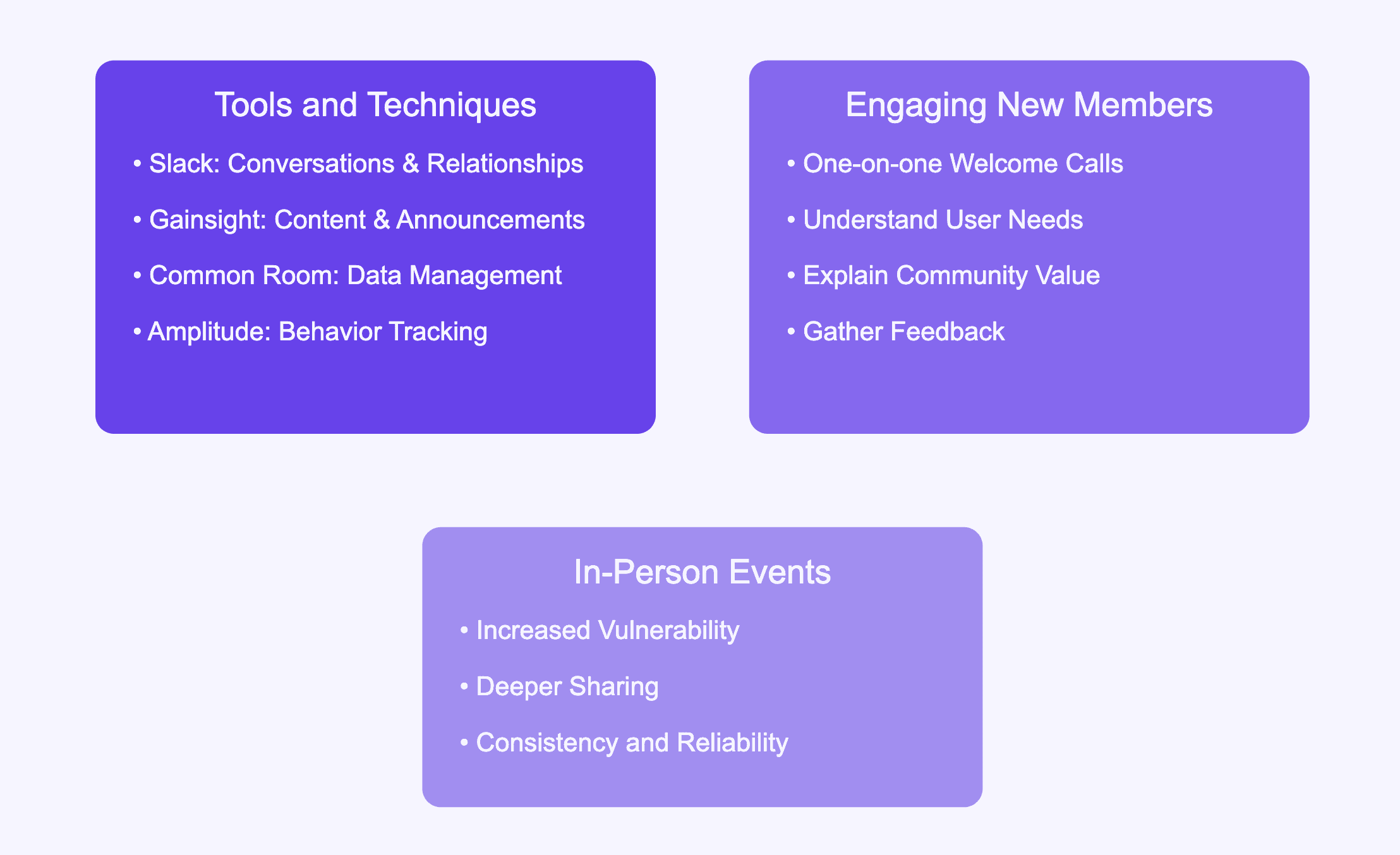
Managing a large, active community requires the right tools and processes. Here's what Amplitude uses:
Slack: For easy conversations and relationship building. It's great for immediate interactions but not ideal for content discoverability
Gainsight Community Platform: Used for content discoverability and one-to-many communications like event announcements
Common Room: Helps with data management and identity resolution across different platforms
Amplitude: They're instrumenting community activities to track key behaviors and measure the impact of community engagement on product adoption
Engaging with New Members
One unique approach Amplitude takes is offering one-on-one calls with every new community member. This personal touch allows them to understand user needs, explain the community's value, and gather insights to improve both the product and the community.
Measuring Community Impact
To demonstrate the value of the community, Amplitude is working on integrating community data directly into their product analytics. This will allow them to measure the impact of community engagement on product adoption and retention more effectively.
Building Community Through In-Person Events
While online engagement is crucial, Esther recognizes the unique value of in-person events in fostering a strong community. She highlights three key benefits:
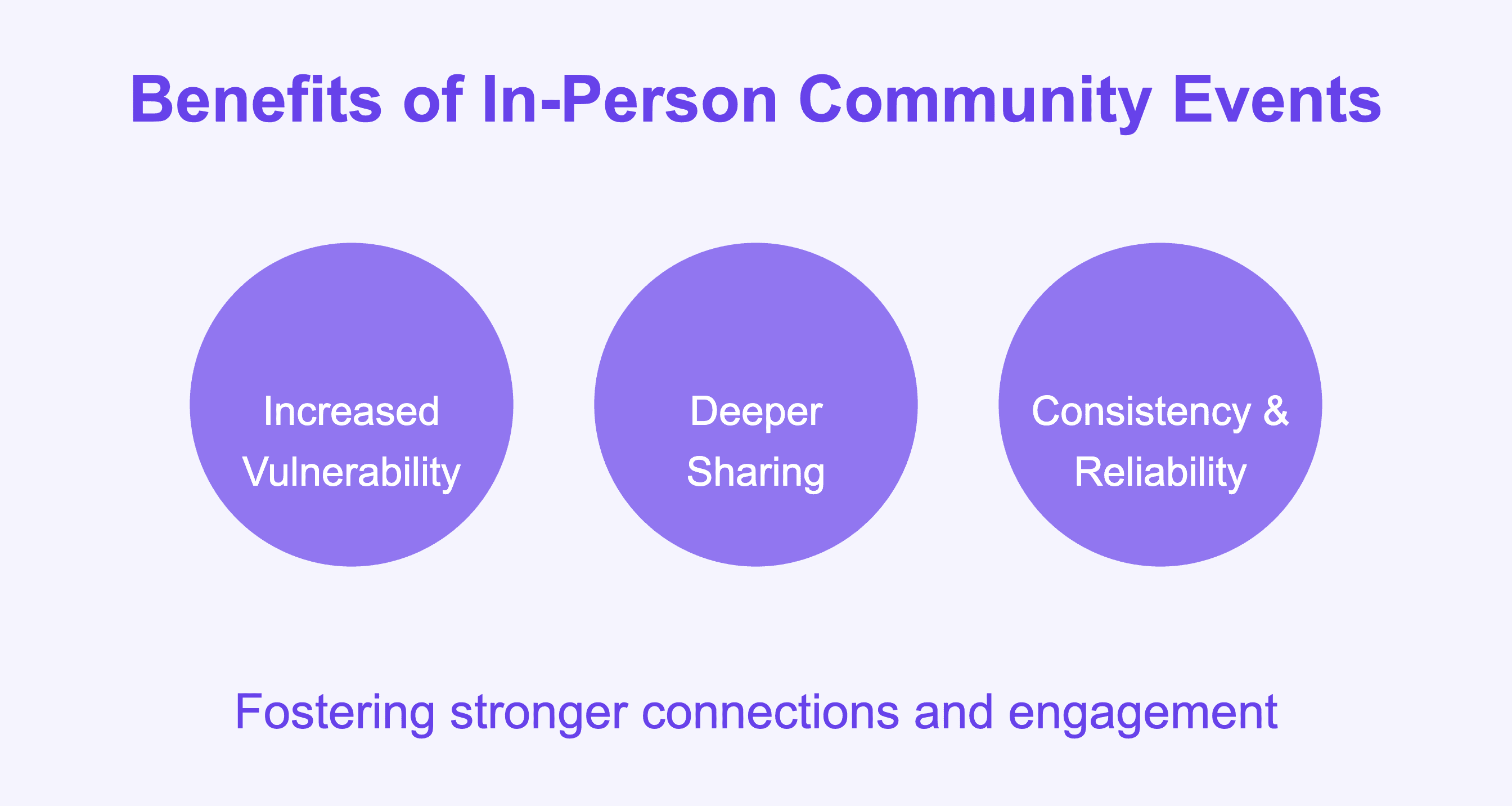
Increased vulnerability: Face-to-face interactions allow for deeper, more personal connections
Deeper sharing: In-person events provide unstructured time and shared experiences that are difficult to replicate online
Consistency and reliability: Regular local meetups create a sense of dependability for community members
Although organizing these events can be challenging, Esther believes that establishing a steady cadence of meetups in key cities where Amplitude users live and work is a significant win.
While it may not directly translate to increased product adoption or revenue, it demonstrates Amplitude's commitment to showing up for their users, which can have long-term benefits.
Measuring Community Success
Esther's team uses a variety of metrics to gauge the health and impact of their community efforts:
Account penetration: Tracking the number of community members per enterprise account helps measure reach within large organizations
Product metrics: Working with the product team to influence key indicators of activation, retention, and churn
Growth metrics: Monitoring new member acquisition, retention, and active weekly members
Content creation: Tracking traffic on community.amplitude.com and overall content creation rates
Fostering User-Generated Content
A key focus for Esther's team is creating spaces and programs that encourage users to generate content. Rather than producing content for users, they aim to set up opportunities for community members to share their experiences and knowledge. Some initiatives include:
Highway Amplitude series: A biweekly use case sharing program where members present specific examples of how they use Amplitude
Office hours: Focused on live builds and practical demonstrations
Slack community organization: Structured to help users feel connected to peers facing similar challenges
By creating these "containers" for sharing, Esther's team aims to make it safe, easy, and relevant for users to contribute their insights and experiences. This approach not only generates valuable content but also strengthens the community by showcasing the expertise of its members.
Conclusion:
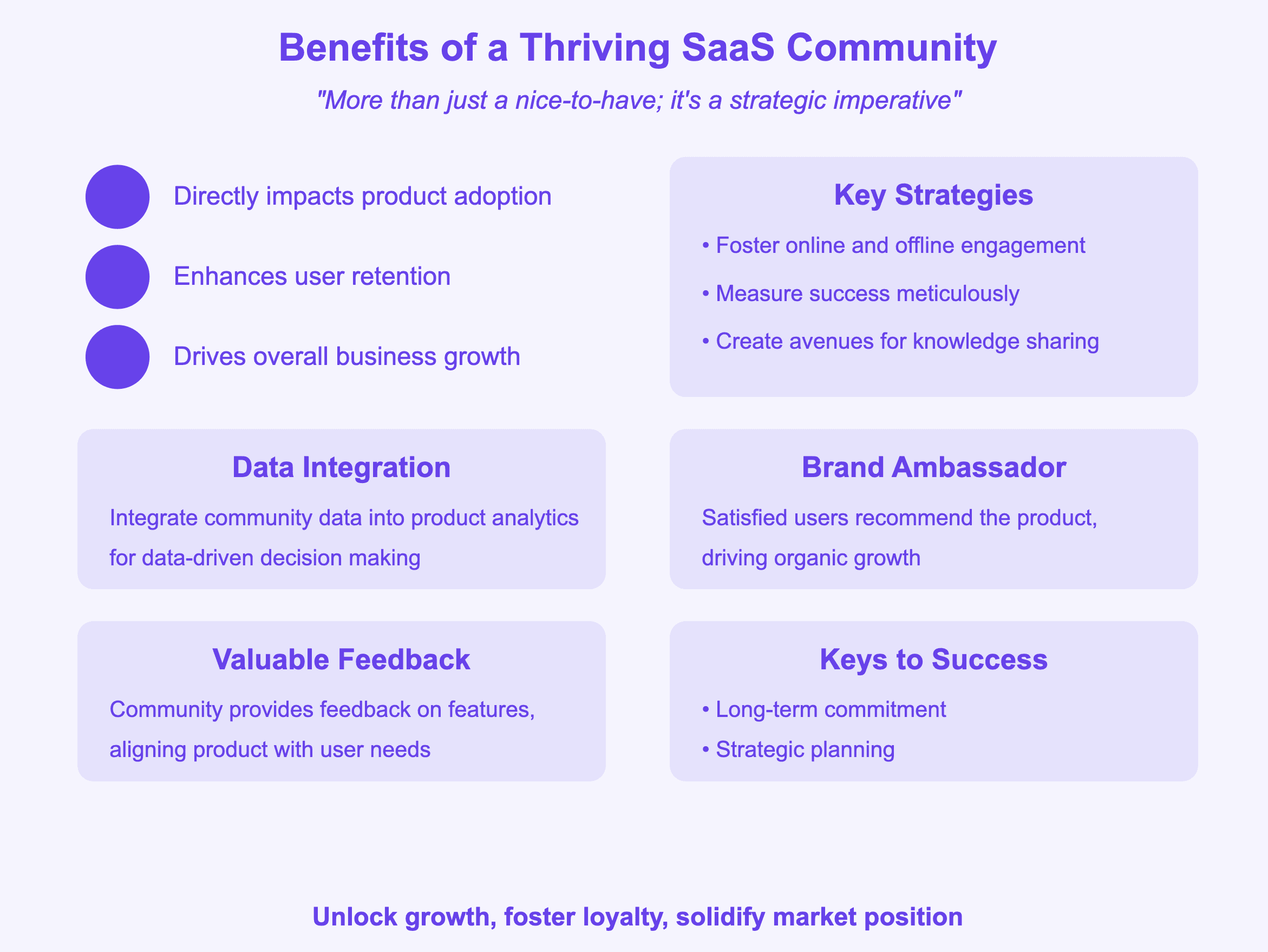
Building a thriving community around a SaaS product is more than just a nice-to-have; it's a strategic imperative. Amplitude's approach, as exemplified by Esther's strategies, underscores the multifaceted benefits of a well-nurtured community.
By fostering both online and offline engagement, measuring success meticulously, and creating avenues for knowledge sharing, Amplitude has cultivated a vibrant ecosystem that directly impacts product adoption, user retention, and overall business growth.
The integration of community data into product analytics is a testament to the tangible value that a community can provide. By quantifying the impact of community engagement on key metrics like product adoption and retention, Amplitude can make data-driven decisions to further enhance its community initiatives.
This approach sets a precedent for other SaaS companies, demonstrating the potential of harnessing community insights to optimize product development and user experiences.
Beyond the quantifiable benefits, a strong community serves as a powerful brand ambassador. Satisfied users are more likely to recommend a product to their peers, driving organic growth and enhancing brand reputation.
Additionally, a community can provide valuable feedback on product features, helping companies to stay aligned with user needs and expectations.
